Artificial Surfaces - the saviour of the Football League?
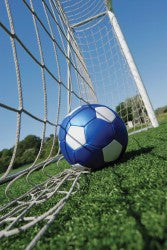 The Football League's decision to formally discuss a proposed re-introduction of artificial surfaces has caused quite a stir. From players and managers to club chairmen, groundstaff, football fans and throughout the media, everyone has their opinion on the return of so-called 'plastic pitches', and interested parties were invited to contribute to the debate during the consultation period (February to April) by completing the Football League Artificial Surfaces Questionnaire.
The Football League's decision to formally discuss a proposed re-introduction of artificial surfaces has caused quite a stir. From players and managers to club chairmen, groundstaff, football fans and throughout the media, everyone has their opinion on the return of so-called 'plastic pitches', and interested parties were invited to contribute to the debate during the consultation period (February to April) by completing the Football League Artificial Surfaces Questionnaire.
The findings of the consultation will be compiled in a report to be distributed among member clubs; the issue will then be deliberated at Football League Board meetings and during the Chairmen's Conference at the end of May.
Technical Surfaces' Nick Harris puts the case for the defence.
Today's artificial turf systems are unrecognisable from the infamous pitches installed at Queens Park Rangers, Luton Town, Oldham Athletic and Preston North End in the 1980s, and the endorsement by FIFA of 3rd Generation 'Football Turf 'in top-level competition has done much to remove lingering concerns that artificial grass is not up to the task.
Synthetic fibres are already being used in Premier League pitches, within the Desso GrassMaster surfaces at clubs including Manchester City, Tottenham Hotspur, Liverpool and Arsenal. More importantly, in the precarious economic climate in which professional football finds itself mired, artificial surfaces have the potential to provide clubs with a much-needed revenue stream that could be the key to their long-term survival.
However, there are also very real concerns about the move towards artificial surfaces, most notably among supporters struggling to see beyond the debacle of the 1980s, and also within the groundcare industry, with a number of groundsmen concerned both for their own livelihoods and for the future role of natural grass in football.
 In this article, I will examine the importance to the debate of people's perceptions of artificial turf, as well as the work involved in ensuring that an artificial surface can rival the quality of the best natural grass pitches, and the implications for groundsmen when it comes to the practicalities of artificial turf maintenance.
In this article, I will examine the importance to the debate of people's perceptions of artificial turf, as well as the work involved in ensuring that an artificial surface can rival the quality of the best natural grass pitches, and the implications for groundsmen when it comes to the practicalities of artificial turf maintenance.
Football is a highly emotive topic to debate, and the Football League is keen to consult as many 'stakeholders' as possible who hold a vested interest in the game. The proposed move to allow teams to play their matches on artificial turf will only go ahead with the approval of a majority of the League's seventy-two member clubs, but the concerns and interests of other, non-voting bodies will also be carefully considered.
Whilst it is clear that the Football League itself is of an open mind and ready to listen to arguments from all sides, it is significant to note that in their 'Artificial Surfaces Consultation Document', two of the four likely potential disadvantages to the use of artificial turf are rooted in perception: namely, the 'perception' of home advantage and the 'perception' of injury.
As fans of football clubs at all levels are aware, tactics are often employed to try and secure a home advantage, from narrowing the playing surface to the minimum permissible dimensions to counteract the wide play of the opposition, to bringing forward the advertising hoardings to combat the threat of the long throw-in from the away team.
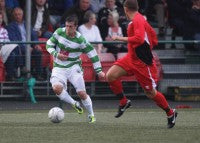 The idea persists that simply being 'at home' is in itself an advantage and, whilst visitors might feel at a disadvantage playing on artificial turf, it can just as easily be argued that teams face an equal, if not worse, situation when playing away fixtures on pitches whose condition is inconsistent throughout the season.
The idea persists that simply being 'at home' is in itself an advantage and, whilst visitors might feel at a disadvantage playing on artificial turf, it can just as easily be argued that teams face an equal, if not worse, situation when playing away fixtures on pitches whose condition is inconsistent throughout the season.
It was reported recently that Wigan Athletic FC were forced to defend the quality of their natural grass pitch, which is also used by rugby league side Wigan Warriors. The club maintained that it was a poor excuse to blame the pitch for a bad result or player injury, and that visiting teams must simply learn to adapt to the playing conditions presented before them.
The 'perception of injury', likewise, is based largely on people's experiences with the 'astroturf' pitches of old. FIFA has openly stated that the risk of injury on its Football Turf systems is no different from playing on a natural grass pitch, whilst the results of a five-year study recently published in the US found FieldTurf to be safer to play on than natural grass.
'Perception', in this instance, suggests a fear of change; in matters concerning football, a tendency towards nostalgia and sentiment is hugely influential, and cannot be overlooked in a debate such as this. Fans would often prefer to see football retain a sense of the unexpected - and even the unjust - rather than risk sanitising the overall player and spectator experience. A quick look at the online message boards reflects this, with fans unhappy at the prospect of the 'perfect pitch' taking the fun out of football, and deriding the notion of the 'hallowed plastic'.
There is a similar dispute ongoing about the need for goal-line technology, in which parallels with this debate can be drawn. Those in favour argue that the technology is there, it is already used in other sports, and it would cause minimal fuss to implement, whilst the rewards for clubs could be significant - an incorrectly 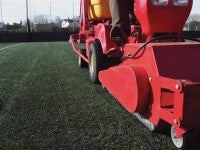 allowed/disallowed goal could determine a club's league position come the end of the season, with clear financial implications. Those opposed to goal-line technology are concerned it will remove the human (read: 'natural') element from the game.
allowed/disallowed goal could determine a club's league position come the end of the season, with clear financial implications. Those opposed to goal-line technology are concerned it will remove the human (read: 'natural') element from the game.
Goal-line technology and the introduction of artificial surfaces could see clubs benefit economically, yet both face fierce opposition on the grounds of tradition. It is certainly no bad thing to want to hold on to traditions, but sentiment surely cannot act as a barrier to change when the economic realities of life in the Football League are threatening the existence of entire football clubs?
A key argument against the introduction of artificial surfaces is that they have no place in professional football. The move towards a greater acceptance of artificial turf is evident, with its prevalence in schools, leisure centres and training facilities across the country. Many professional clubs boast a 3rd Generation pitch within their academy resources, and young footballers are training daily to develop their skills on artificial pitches that are widely acknowledged to encourage a technically superior style of play, as the focus tends towards passing accuracy and a faster, flowing style of football.
Yet, still there is a reluctance to transfer this to the professional game, at least in England. In Scotland and Wales, pragmatism has won over many doubters: the success story of The New Saints FC (TNS) has encouraged other clubs within the Welsh Premier League to introduce artificial pitches, and has proved no barrier to the club's own domestic and European ambitions, as their FIFA 2* 3G Ligaturf pitch can host Europa League and Champions League matches, as well as league fixtures.
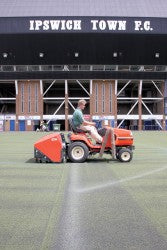 The pitch at Park Hall Stadium is maintained on a regular basis with a combination of regular sweeps, decompactions and remedial works, which has helped to preserve the playing characteristics of the surface to FIFA-approved standards. To be able to host matches at the highest level of European football, it is vital for The New Saints to safeguard their 'FIFA Recommended' status, and, to that end, the club has committed to an ongoing maintenance contract over a five-year period.
The pitch at Park Hall Stadium is maintained on a regular basis with a combination of regular sweeps, decompactions and remedial works, which has helped to preserve the playing characteristics of the surface to FIFA-approved standards. To be able to host matches at the highest level of European football, it is vital for The New Saints to safeguard their 'FIFA Recommended' status, and, to that end, the club has committed to an ongoing maintenance contract over a five-year period.
Mike Davies, former Director of Football at TNS, justified the move towards artificial turf when he said "the pitch plays superbly and allows continuous use morning, noon and night. As a business, which all clubs now are, what better way is there to generate an income stream for your club?"
This is at the very heart of the debate, and is the motivation behind the recent approach to the Football League from a number of member clubs desperate to halt their financial crises.
In Scotland, a poor climate (weather and economic) forced a number of clubs to seek alternatives to natural grass, to both improve the year-round quality of their pitches and to generate a steady revenue stream. That clubs in England should want to do the same comes as no great surprise as, first and foremost, a football club is a business - true, football does not generally abide by the basic economic principles of supply and demand that govern trade and industry, but a stable business model is central to a club's prosperity, and to its role in the community.
The idea that artificial surfaces can enhance professional football is slowly being accepted, and for every doubter there is an advocate who, whilst favouring the use of natural grass where possible, recognises the advantages of using artificial turf. Indeed, within the many articles that have been published, both in print and online, reporting on the Football League's proposal, the benefits of artificial pitches are routinely listed: advancements in the technology of artificial turf systems; endorsement from FIFA; income to be gained from hiring out the pitch to the local community; consistency of play all year-round; savings to be made in both training and playing on the same surface, as well as an artificial pitch's durability and longevity.
Worryingly, however, chief among the 'accepted benefits' is the erroneous statement-as-fact that an artificial surface offers a low-maintenance alternative to natural grass, and, in using artificial turf, clubs can substantially reduce their overheads by slashing their maintenance budgets. Even the Football League's Consultation Document lists 'reduced pitch maintenance costs' as a potential advantage of an artificial surface.
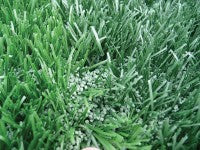 However, the Football League does proceed to qualify this statement by stressing that "any potential reduction in maintenance costs would only be a realistic gain after accounting for adequate maintenance and care of the artificial surface so as to ensure its ongoing compliance with the FIFA 2 Star standard."
However, the Football League does proceed to qualify this statement by stressing that "any potential reduction in maintenance costs would only be a realistic gain after accounting for adequate maintenance and care of the artificial surface so as to ensure its ongoing compliance with the FIFA 2 Star standard."
Yes, it is true that considerable economic rewards can be gained by investing in an artificial surface, but they cannot be achieved at the expense of its maintenance. Indeed, it is only by means of a suitable maintenance programme that an artificial pitch can realise its potential.
The financial advantages lie, not in saving on maintenance costs, but in the ability to generate further income by using the surface to a far greater level than a natural pitch could hope to provide.
Natural grass football pitches can usually cope with 20-30 matches during a 10-month season, but alternative venues must be found to host first-team training, academy practice and community initiatives. A well-maintained artificial pitch allows a far greater amount of use by both the football club itself and the wider community. Crucially, within the Football League's Consultant Document's 'Outline Business Plan for an Artificial Surface at a Football League Ground', the following caveat is included: "Maintenance is a very important element of the business plan, as it affects both the potential for cost savings and the lasting quality of an artificial surface."
It is encouraging that the Football League has highlighted the importance of maintenance as a key consideration during any overall debate on the introduction of artificial surfaces. Where resources are available, responsibility for the maintenance will most likely fall within the remit of the club's own groundstaff, utilising the expertise of maintenance contractors for more specialist work that may fall out of the scope of practicality and/or affordability to be completed in-house.
Yet, there is reluctance within the groundcare industry to fully embrace the shift towards a greater use of artificial turf in professional sport, for fear that its use will inevitably overtake that of natural grass, which will eventually be sidelined altogether in favour of 'plastic pitches', with consequences for the future role of the groundsman.
I would argue otherwise; it should be noted that natural grass, in its best condition, is the quality benchmark that a FIFA 2 Star Football Turf pitch must strive to emulate. If a football club is able to run efficiently as a business with a natural grass pitch then that is, of course, the ideal scenario. Unfortunately, many member clubs within the Football League need to increase income just to survive, and artificial surfaces provide a realistic way to achieve this.
It is simply not true to suggest that little or no real expertise is required to maintain artificial sports pitches. True, a different set of skills is required and, whilst natural pitch maintenance is recognised as an art, the maintenance of artificial surfaces is instead founded in the science and mechanics behind the creation of modern artificial turf systems. But, a poor understanding of the maintenance requirements of an artificial pitch can be detrimental to its long-term viability, and so a club's grounds team will remain a valuable resource in safeguarding its valuable asset.
In the ongoing debate surrounding the possible return of artificial surfaces to the Football League, it would seem that the argument no longer centres on the actual quality of synthetic turf. The bottom line is that FIFA, football's world governing body, simply would not sanction a below-par alternative to natural grass, and their own Football Turf systems can be found in stadia worldwide.
Instead, the opposition to artificial surfaces seems rooted in a fear for footballing tradition. The fact is, professional football is not the game it once was: TV revenue, commercial sponsorship and player transfers and wages have brought untold wealth into top-flight football. But, the funds swirling around the Premier League are simply not filtering through to the lower levels, and clubs in the Football League and below are facing a real fight for survival in today's money-obsessed game.
As well as thriving as a business in and of itself, the financial and social value of a football club to its local community cannot be overstated and, if artificial surfaces can help strengthen the bonds between club and community whilst providing clubs with a steady revenue stream that can secure their future, it would be nonsensical to dismiss them on the basis of upholding traditions.
As for the role of the groundsman in all of this, the value of an artificial surface is only as good as the maintenance and care it receives throughout its life, and daily maintenance is a must if clubs want to benefit from the increase in use - and revenue - afforded by an artificial surface.
If you have a 3rd Generation surface and need help or advice on maintenance, contact Technical Surfaces on Tel: 08702 400 700 and ask to speak to a Technical Manager.
